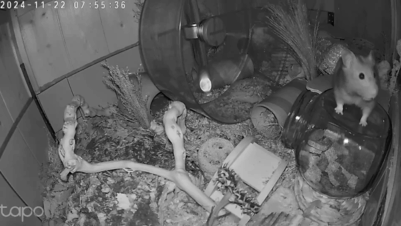A recent peer-reviewed report investigating and defining short-term housing for animals uncovered some surprising and stark facts. It exposed not only the fact that there appears to be no standard description for what constitutes “short-term” housing, but also that scientific, formal and informal representations vary between 90 minutes and 3 months. References to short-term confinement of animals occur frequently in the literature concerning veterinary clinical care, exhibitions, laboratory and field studies, relocation projects and pet trading, among other situations.

Keeping it short matters
Short-term confinement typically involves relatively deprived husbandry precisely because it constitutes temporary or transitional stopgaps between, at least hopefully, best-practice care. Temporary or transitional situations are usually regarded as distinct from transport conditions.
Short-term confinement typically involves relatively deprived husbandry precisely because it constitutes temporary or transitional stopgaps between, at least hopefully, best-practice care
A primary principle of why protection regarding short-term confinement is crucial to animals arises from the inherent risk to welfare associated with below-par environments and care, and the concerns of biological transition from tolerable acute stress to harmful chronic stress. So, one of the last things an animal needs is protracted stress when they are already sick, injured or suffering from common pre-existing abuse.
Acute and chronic stress
Stressors can have acute or chronic effects. Acute episodes, such as social competition, low-level predator–prey encounters and minor injuries, usually have transient results within the normal coping limits of animals. However, sometimes they can have enduring consequences lasting days, weeks or longer. Sequences of acute and minor stressors (“microstressors”) or persistent challenges (invasive lighting, noise) can also progress to chronic stress, with outcomes affecting homeostasis and increased morbidity and mortality.
Ensuring that short-term accommodation stays within the circadian cycle is, therefore, a key factor in preventing negative health consequences
An important consideration to avoid the harmful acute-to-chronic stress transition is whether or not an individual has the opportunity to recover during their circadian cycle. This means stressors should at least be processed and coped with before the next day to reduce or eliminate the stress burden from being carried forward. Ensuring that short-term accommodation stays within the circadian cycle is, therefore, a key factor in preventing negative health consequences.
Inconsistent and nonsensical standards
Academic researchers frequently aim for minimal short-term confinement, recognising that greater captivity stress is not good for animals and could also compromise physiological and behavioural data, for example. Similarly, for obvious reasons, veterinary clinicians wish to avoid confinement stressing animals and impacting immune systems. Acute stressors can be minimised by truly short-term confinement and thence, preferably, moving to amiable quarters to ameliorate settlement. This approach reflects the ethos of the science-based communities and the need to prevent chronic stress.
In contrast, commercial – especially exotic – pet selling operations lack a scientific basis and instead adopt practices driven by convenient storage, minimalistic husbandry and profit – none of which favour animal welfare. Indeed, for large volumes of exotic species, wild capture, intensive captive breeding, repeated handling, packaging, transport and re-transport are the norm, with persistent deprivations that beg for the relative relief of high-quality long-term husbandry. But instead, such animals will likely endure yet more stress under the guise of acceptable short-term accommodation.
Defra allows English pet sellers three months to keep animals in so-called temporary accommodation, making retail stores and their suppliers one of the worst offenders for enabling excessive periods in lower-standard conditions
Currently, Defra allows English pet sellers three months to keep animals in so-called temporary accommodation, making retail stores and their suppliers one of the worst offenders for enabling excessive periods in lower-standard conditions. That makes no sense at all. Moreover, in the case of pet shops – because many, if not most, animals will be sold within this time period – this provision effectively allows them to be held at lower standards for the entire time they are stored or on sale. This enables dealers to evade the higher (but still low) standards of husbandry stipulations recommended by UK law.
Indeed, the arbitrary nature and irrationality of interpretations for short-term housing was nowhere more blatant than in the disjointedness of guidance emerging from Defra. Contrary to the laxity shown towards pet sellers, Defra stipulates that short-term housing should be considered at 12 hours for boarded cats and 24 hours for mobile exhibitions. At the very least, despite “short-term” being a commonly used provision, its application seems almost random.
Prestressed animals need the best conditions
Across various sectors, many animals may either be stressed by short-term conditions or arrive prestressed before potentially facing additional pressures associated with new housing; thus, even temporary conditions should be as comfortable as possible. Welfare-wise, short-term environments and related husbandry should only be considered with respect to vital stopover stations in place purely to house animals for the absolute minimum necessary period prior to release or for triage purposes while transferring them to better situations.
Short-term or temporary conditions must not exceed 24 hours
Essentially, short-term conditions can be regarded as laxities or failures of good care that must themselves be restricted to constitute stepping stones either to serving the best interests of the animal or to situations of rapid transfer.
At its maximum, short-term should be taken to mean periods of less than one full day, with shorter timeframes being the objective wherever possible
To cut a long story short, at its maximum, short-term should be taken to mean periods of less than one full day, with shorter timeframes being the objective wherever possible. At or beyond 24 hours, all animals should be transferred to comfortable quarters in keeping with best-practice long-term husbandry. Anything else could be considered beyond the healthy tolerance of animals and should be beyond the rational and principled tolerance of their captors.










